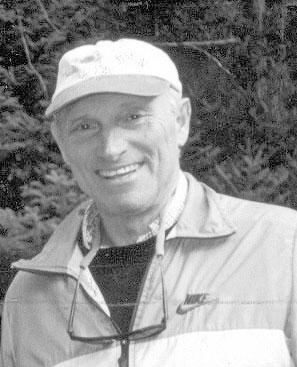…for his many contributions toward understanding the geology of Block Island and adjacent areas, and for bringing that understanding to all citizens and visitors to the Island.

Born in Dover, Delaware, Leslie Arthur Sirkin, or Les as he wished to be called, grew up in Watertown, NY, and retained close ties to the Adirondacks while establishing first his summer home and then his permanent residence on Block Island. Les was educated in New York State, receiving his B.A. from Hamilton College in 1954 (Geology), his M.S. from Cornell University in 1957 (Stratigraphy, Sedimentation, and Paleontology), and his Ph.D. from New York University in 1965 (Micropaleontology and Palynology). Along the way, Les taught high school science for 3 years before joining the faculty at Adelphi University in 1962, where he remained for 38 years. He founded undergraduate and graduate Earth Science programs and then the Department of Earth Science, serving as its first Chairperson from 1967-1975. He served two additional terms as Chair from 1984-1987 and 1990-1993. He retired from teaching in 1996, but remained active as a Research Professor.
During his long career at Adelphi, Les taught 20 different Earth Science courses and thoroughly enjoyed sharing his knowledge with others, particularly during field excursions. He was known by his students as the “Dean of Geology.”
His research focused on the timing of geologic events and the nature of resulting materials deposited during the Quaternary Period (the last million years of earth history), using micropaleontology and palynology (the study of microfossils and pollen grains) as a tool to unravel the geologic history of an area. His work took him to glaciated regions and coastal plains in the northeastern U.S., southeastern Alaska, and coastal regions of western Mexico. Much of his later work concentrated on understanding the glacial history of the southern margin of the last great ice sheet in the northeastern United States. That margin included present-day Long Island and, of course, Block Island. Besides the stream of papers in journals, Les found the time to write Block Island Geology, Eastern Long Island Geology, and Western Long Island Geology, books for the educated layperson that summarized his long years of study of each of these areas. Particularly important are the self-guiding field trip logs provided at the end of each book.
Les was a fellow of the Geological Society of America and a stanch supporter of that great non-organization, the Friends of the Pleistocene. The “Friends,” as they are known, gather each spring for two days of lively discussion in the field. Les co-led two trips and was the leader of the 1998 trip to eastern Long Island. Les also supported the fall field meetings of the New England Intercollegiate Geology Conference (NEIGC) that are specifically designed for geology students. Les was a leader in 1981 and a co-leader in 1998 when the conference was held in Rhode Island. His dry, whimsical humor was always much in evidence, particularly when the trip leaders carried on too long at the outcrop.
Les spent his summers on Block Island at Sheep’s Meadow learning geology, leading field trips, and enjoying sailing his catboat, the Loon. He endeavored to give back to the people of Block Island part of what the Island had given to him.